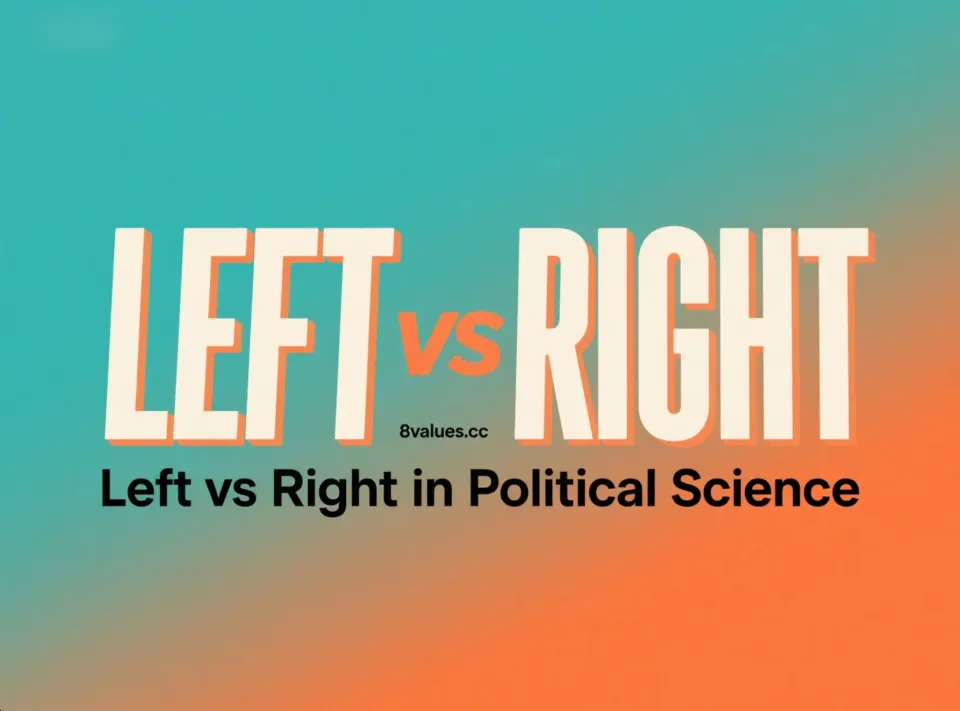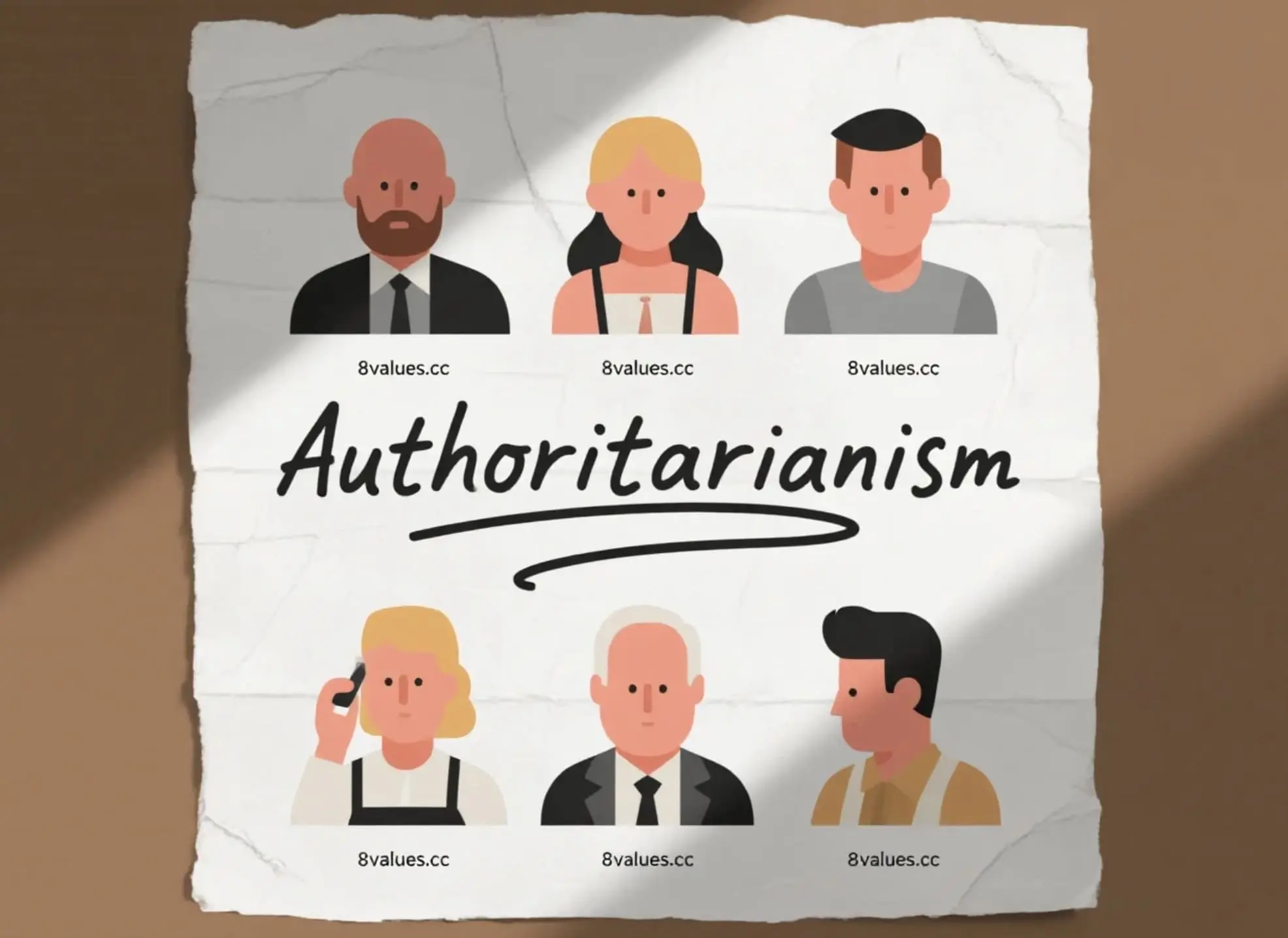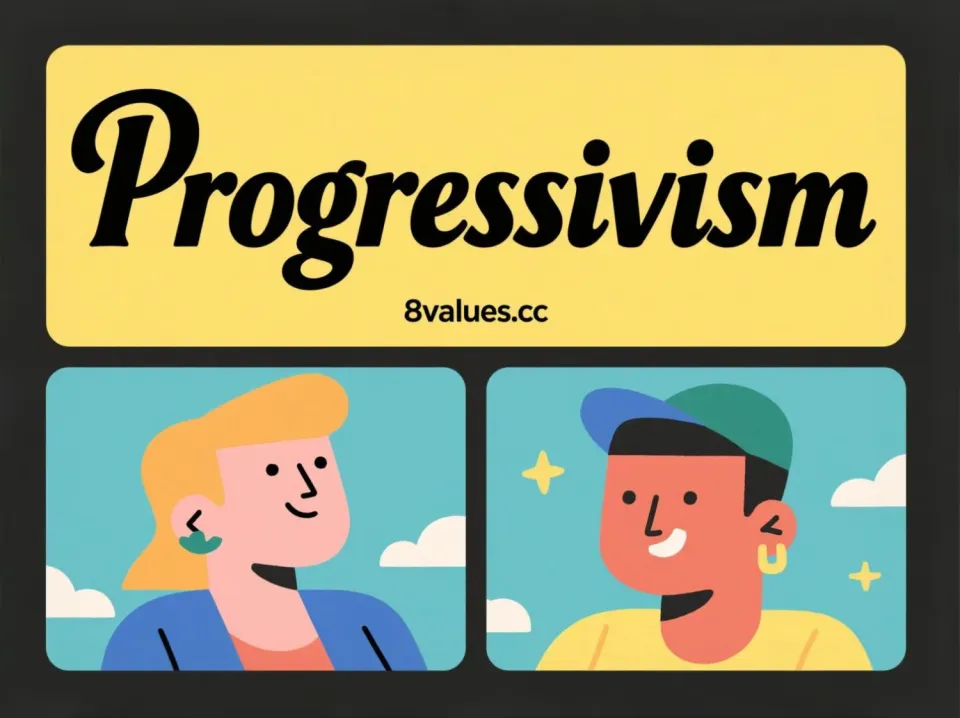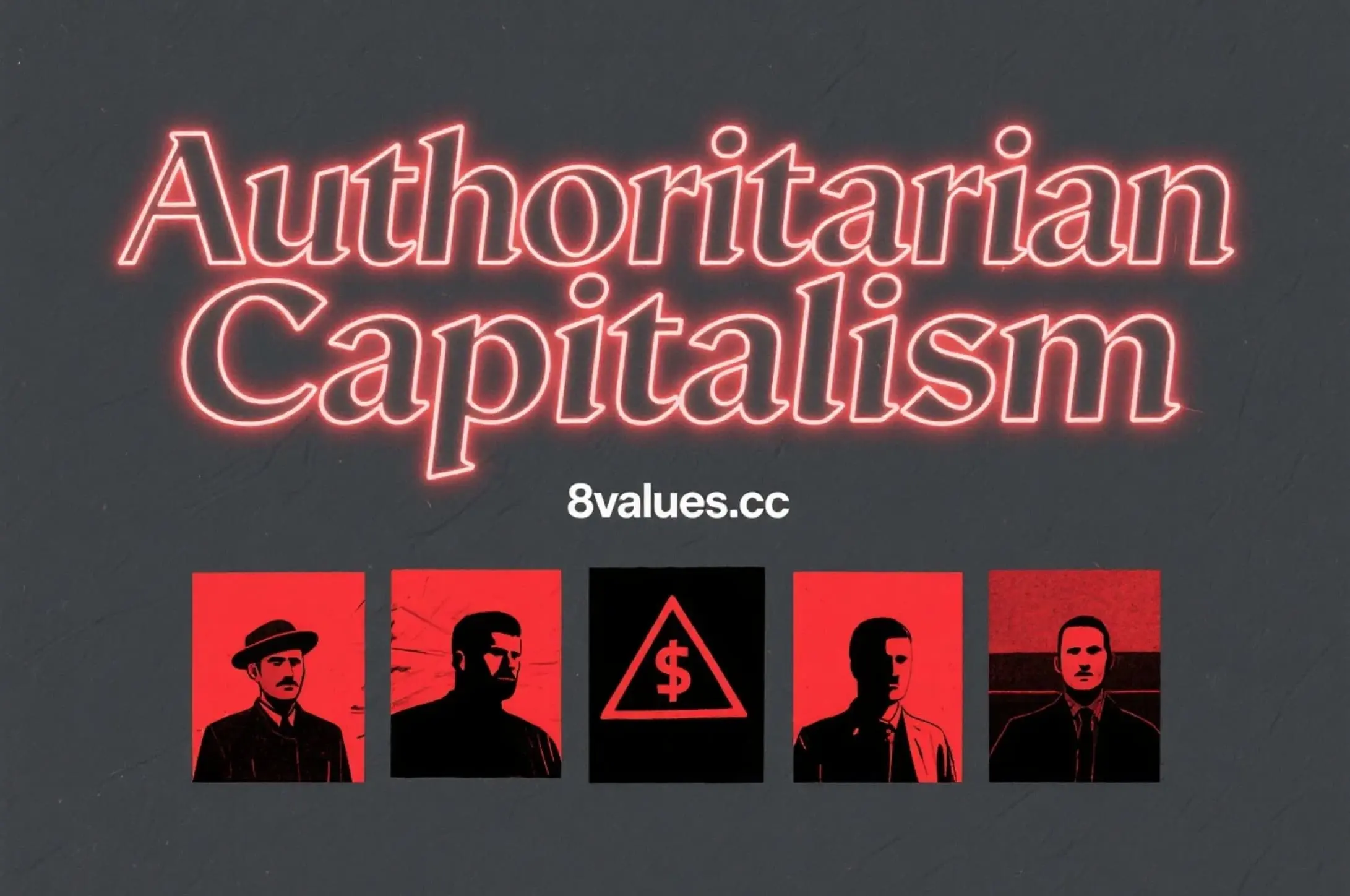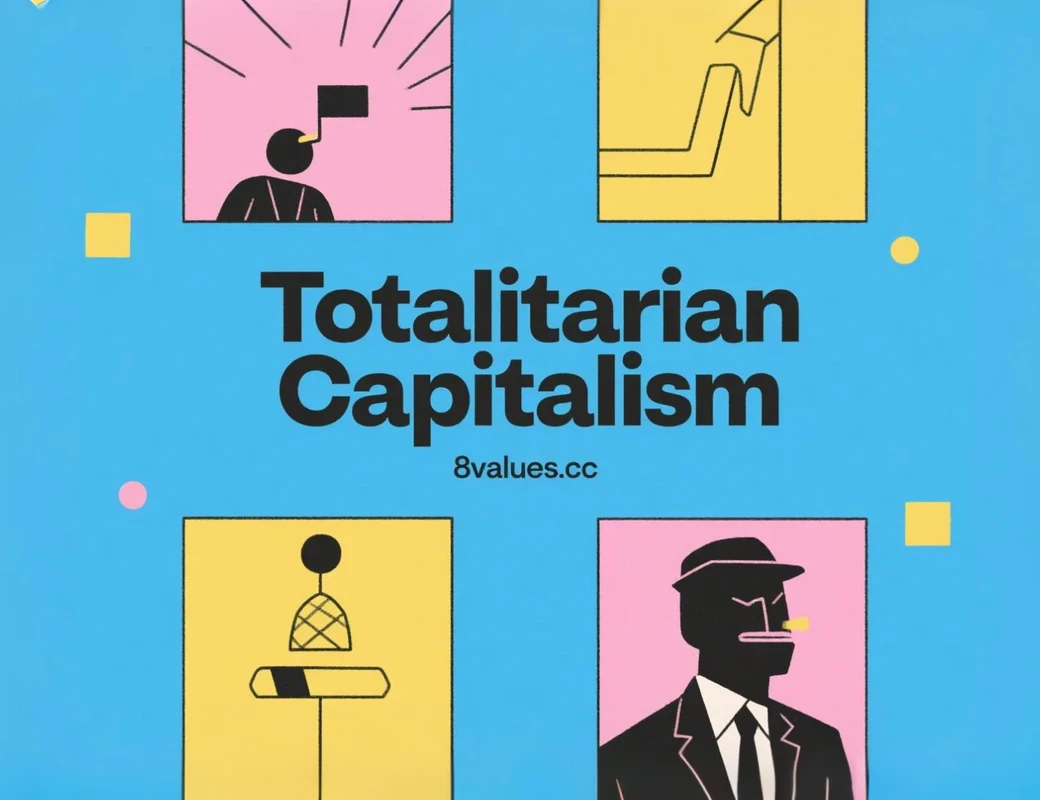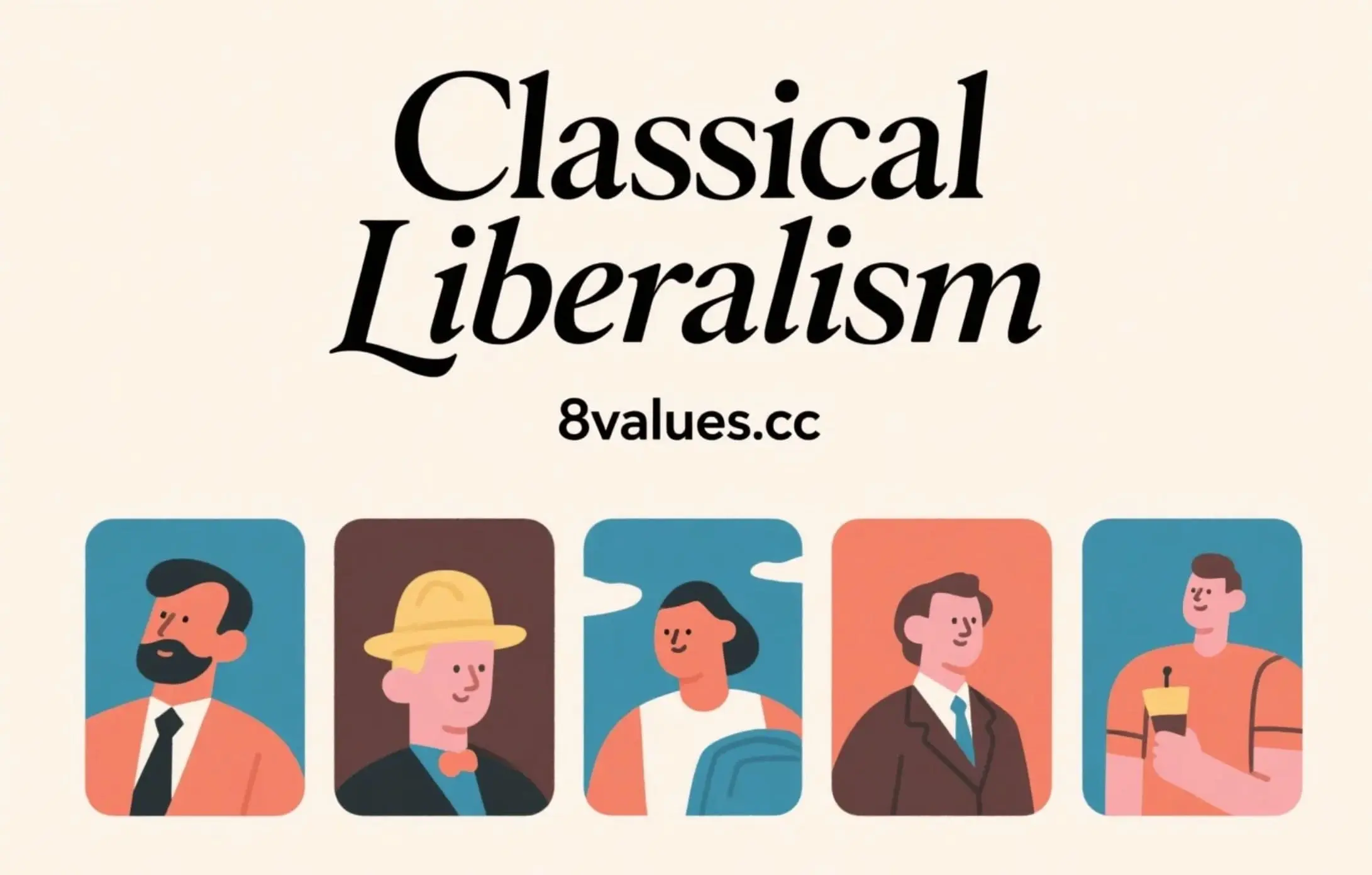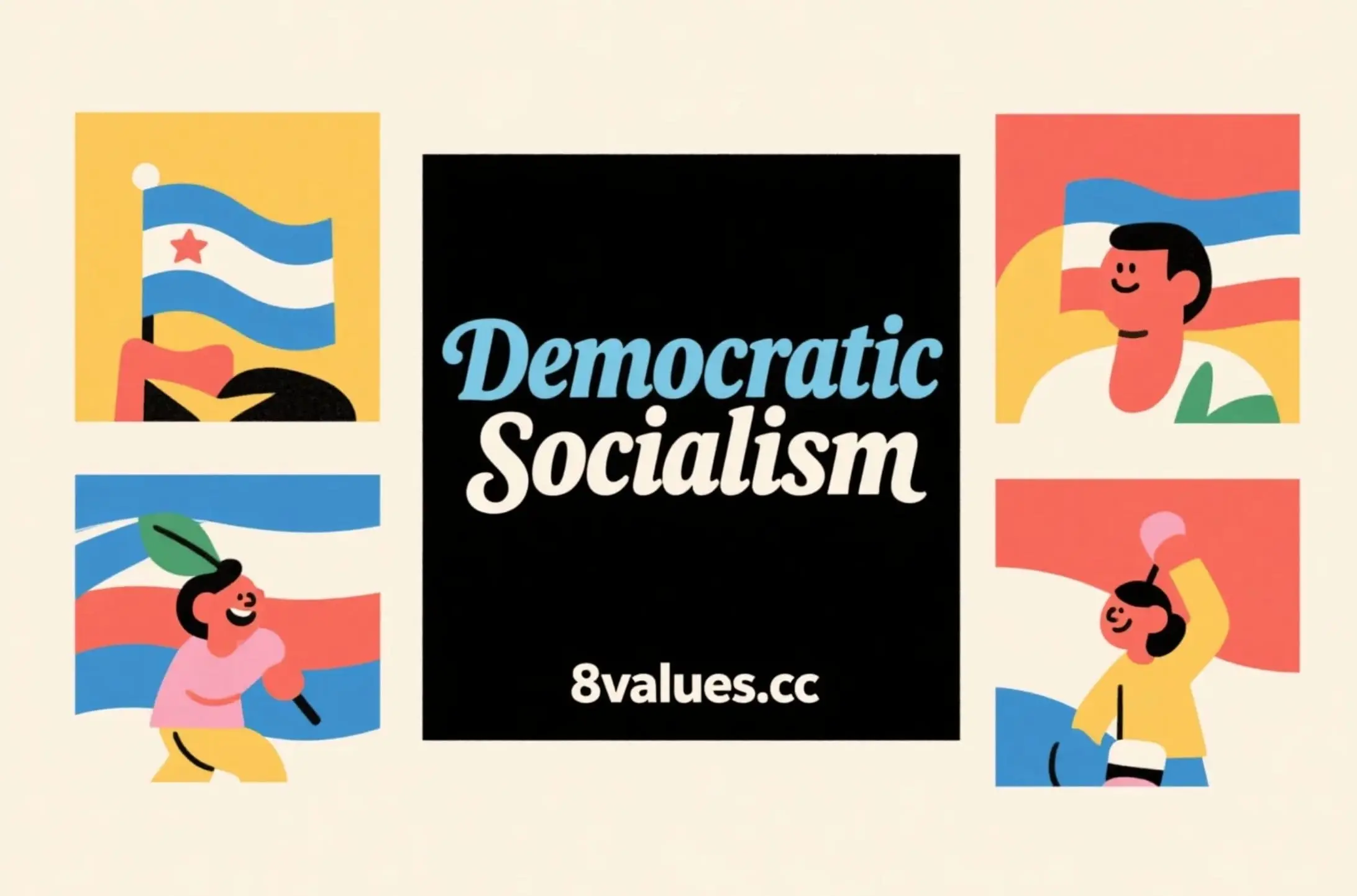Left vs. right, left vs. right, left vs. right in political science: How to determine whether the political ideological tendency is left or right?
In-depth interpretation of the origins of "left" and "right" in political science, the differences in core values, and the demarcation standards of the modern multi-dimensional political spectrum (such as the Nolan Curve). Learn how to find where you stand with the Political Values Ideology Test, explore the equality versus freedom debate, and the nature and risks of the far left versus the far right.
Welcome to the official blog of the 8Values Quiz political ideology test . In modern political discussions, "left" and "right", "left" and "right" are keywords that appear frequently, but the definitions and connotations behind them have continued to evolve over the course of history and have been affected by different countries and issues. To help you better understand political ideological leanings and explore where you stand (for example, through our various popular political values ideological leaning tests ), this article will provide a detailed analysis of the origins, core principles, and derived concepts of left-leaning, right-leaning, extreme left, and extreme right in political science.
Tracing the Origins of the “Left and Right” Divide: The French Revolution
The "Left-Right" political spectrum originally originated from the French Revolution at the end of the 18th century. In the legislative assemblies of the Revolution, especially the French National Assembly in 1791, the sitting position of politicians established this criterion.
- Right (right-wing politics) : People sitting on the right side of the forum are usually "conservative" or moderate royalists and supporters of "absolute monarchy". They originally represented conservatives who supported aristocratic, royal, and clerical interests.
- Left (left-wing politics) : People sitting on the left side of the forum are usually radical revolutionary parties and people who advocate "freedom" and "democracy." They originally represented those who opposed the interests of the aristocratic and clerical classes in the ancien régime.
This division was originally based on attitudes towards the "Ancien Régime". Therefore, a simple traditional division is: innovation is on the left; conservatism is on the right . The left usually advocates active reform and hopes to abolish old ideologies and systems in order to establish new ones, while the right prefers a steady, orderly, gradual, and slow reform approach and emphasizes the maintenance of old traditions.
It is important to note that the definition of left and right is not set in stone. For example, during the early days of the French Revolution, those who supported laissez-faire capitalism were considered leftists (because this represented the interests of the bourgeoisie against aristocratic privilege). However, in most modern Western countries, this position is considered right-wing.
Core Values Debate: Equality vs. Freedom
Although the specific claims of the left and right differ in different contexts and cannot be divided by static "isms" or "classes," their core differences always revolve around the emphasis on equality and freedom . The slogan of the French Revolution, "Liberty, Equality, Fraternity," itself embodies the tension between these two values.
Generally speaking:
- Left : More emphasis on equality . The left believes that the world should be fair, so they should try their best to eliminate all interference that causes unfairness. The left emphasizes building a welfare state and using more state intervention to help the weak.
- Right : more liberal . The right believes that the world is not and cannot be fair, so they must try their best to maintain a system that can make the world fairer. The right opposes excessive welfare, supports competition, opposes state intervention, emphasizes the establishment of a "weak" government, and opposes excessive restrictions on the strong.
French President Macron once pointed out that the pursuit of the left is "equality" and the pursuit of the right is "freedom", and the founding spirit of France is to achieve a certain balance between the two.
How to judge left or right: the intersection of economic and socio-cultural axes
Political scientists generally agree that a single left-right axis is too simplistic and inadequate to describe the complexity of political beliefs. Therefore, the modern political spectrum often uses a two-dimensional or higher-dimensional model, in which the two commonly used coordinate axes are the economic axis (left versus right) and the sociocultural axis (authority versus freedom). For example, through the 8 Values political orientation test or the 9 Axes political ideology test , users can determine their position on these dimensions in more detail.
Economic Position: Social Intervention vs. Free Market (Socialism vs. Capitalism)
In modern times, the most widely known distinction on the political spectrum is the economic dimension: socialism on the left; capitalism on the right .
- Left (economically) : Tends to oppose the inequalities created by free markets . Advocates government intervention (interventionism) to relieve poverty. “Socialism” here generally refers to a political system with high taxes, high welfare, and high government intervention and regulation . The left often supports aid and protection for vulnerable groups such as ethnic minorities and middle- and lower-class people.
- _Covered ideologies:_ Socialism, social democracy, democratic socialism, social liberalism, communism.
- Right (economically) : Tends to be pro-market . Advocates economic liberalism, free competition and laissez-faire (non-interventionism). The right prefers "let nature take its course and free competition."
- _Ideologies covered:_ Capitalism, neoliberalism, conservatism, right-libertarianism.
In addition, in the economic field, the debate between procedural justice and fair results is often used to distinguish left from right. People on the right tend to believe that a fair process will produce fair results (such as a free market). Those on the left tend to believe that if the outcome is not fair, then the process will not be fair.
It is worth mentioning that in the context of the intertwining of business and social issues, such as rainbow capitalism (or pink capitalism) , although it tends to accommodate minority groups (such as sexual minorities) on social issues, it is still the operating model of capitalism economically, which reflects the multi-dimensional complexity of the political spectrum.
Social and cultural stance: secular progress and ethical conservatism
In addition to the economic axis, social and cultural issues also provide important distinguishing criteria:
- Ethically liberal is on the left; ethically conservative is on the right : The left usually supports sexual liberation, gender equality, open relationships, same-sex marriage, abortion, etc. The right opposes these sexually liberal practices and may rely on religious teachings or rituals and legal systems to maintain social harmony.
- Secularism is on the left; religious tradition is on the right : The left prefers a government that is secular and separate from church and state . The right prefers an incomplete separation of religion and government .
- Cosmopolitanism and internationalism are on the left; nationalism and nationalism are on the right : The left usually advocates international cooperation and achieving a win-win situation through international organizations. The right is more supportive of national sovereignty and opposes the policies of transnational organizations overriding sovereign states.
The extreme political spectrum: the essence and disguise of the extreme left vs. the extreme right
On opposite ends of the political spectrum are the far left and the far right. Despite their opposite positions on the left-right axis, they often show dangerous similarities in their attitudes toward freedom and power, and there is even the possibility of a role reversal from the far left to the far right.
The ultra-left: Breaking through the “bottom line of freedom”
The so-called ultra-left refers to pushing leftist thinking to the extreme and breaking through the "bottom limit of freedom." In order to obtain undifferentiated justice, it eliminates most freedoms. In order to achieve this, an extremely powerful state machine must be established to bring all activities of the people under the control of the state.
The goal of the extreme left is to obtain economic justice without distinction, but due to differences in individual abilities, suppressing individuality and seeking justice will inevitably lead to totalitarianism . Although this system may achieve basic economic equality, it will result in extreme inequality of power . Those with high positions and powerful positions can do anything, while those with low status cannot even protect their lives. Therefore, the far-left system is considered to be pseudo-fair .
- _Ultra-left ideologies include:_ Anarchism and Communism (radical ideological trends arising from the pursuit of ultimate social equality).
The far right: Breaking through the “bottom line of equality”
The so-called extreme right refers to pushing right-wing ideas to the extreme and breaking through the "bottom line of equality." It deduces opposition to the state's restriction of the strong into wanting the strong to control the state and bully the weak . The extreme right advocates that "the state exists only for the strong" (Stolypin), implements an oligarchic dictatorship, and cancels all protection and all freedoms for the weak.
The key irrationality of the far-right system lies in its neglect of "equality of starting points." For example, canceling all social security (such as pensions and medical insurance) for the weak and claiming "free competition" is not actually true "free" competition. Far-right systems often manifest themselves as crony capitalism and oligarchic dictatorship . Therefore, far-right institutions are considered pseudo-liberal .
- _Far-right ideologies include:_ National Socialism (Nazism), Fascism, Anarcho-Capitalism, Imperialism, Reactionism, Traditionalism.
Similarities between far left and far right
Although the extreme left and the extreme right are at opposite ends of the political spectrum, they have the same "roots" and are even close to each other . In the far-left system, national property nominally belongs to the whole people, but the right to control belongs to the center of power. It is very simple to transform into an far-right system. All you need to do is take off the fig leaf of "all the people own" and directly rely on power to convert public property into private property .
Political spectrum researcher Hans Eysenck believes that although National Socialists and Communists have opposite positions on the left-right axis, they are essentially similar in being tough, aggressive and authoritarian .
Analysis of subtle tendencies: left-leaning VS right-leaning and left-wing VS right-wing
In addition to the broad divisions between left and right, in specific contexts, there are also more detailed terms such as "left leaning", "right leaning", "left wing" and "right wing".
Left vs Right (in the left/socialist position)
Left-leaning and right-leaning (sometimes written as "left" leaning in quotation marks) are the cognitive deviations of leftist thinking from the socialist stance. They describe differences in understanding on the path to achieving a goal:
- "Left" leaning (radical risk-taking) : refers to the tendency in political ideology to transcend objectivity , break away from social reality conditions, and fall into fantasy, blind action and risk-taking . It manifests itself in the eagerness for success, subjective exaggeration of revolutionary power, and underestimation of objective difficulties and enemy power.
- Right deviation (passive conservatism) : refers to the tendency in political ideology to lag behind reality in understanding, to be unable to change and advance with the changing objective situation, and even to violate the objective laws of development. If a systematic line is formed, it will become right-leaning opportunism , which may abandon principles and sacrifice fundamental interests in order to achieve compromise in political struggles (also known as right-leaning capitulationism).
Left vs Right (in the right/capitalist position)
Left-wing and right-wing are the deviations of right-wing thought from the standpoint of liberal capitalism, and are concepts in the right-wing dictionary.
- Bourgeois left : These people advocate social fairness , increase social welfare, and advocate the improvement of the shortcomings of capitalism. Their policies can ease the contradiction between the bourgeoisie and the working class and bring benefits to the working class. For example, the Democratic Party in the United States is generally regarded as a left-wing party (or liberal party). They advocate government intervention in the market economy and the establishment of a welfare state. Readers who hope to gain a deeper understanding of left-wing ideological trends through the LeftValues left-wing political values test can click on the test.
- Bourgeois Right : These people support natural competition , oppose the growth of social welfare, and oppose capitalist reforms in order to maintain the old free market economic system. For example, the Republican Party (or conservative party) in the United States supports economic liberalism and is often considered a right-wing party. Readers who wish to explore right-wing ideological trends through the RightValues right-wing political spectrum test can click on the test.
A pluralistic model of the political spectrum and self-exploration
The distinction between left and right has always been controversial in political science, especially in the 21st century, with many modern thinkers questioning whether a single left-right distinction is still meaningful enough.
The Nolan Chart is one of the famous dual-axis models, which is used to measure personal political stance tendencies (political coordinates). It considers two dimensions:
- Economic freedom : Measures issues such as taxation, free trade, and free enterprise.
- Personal freedom : Measuring issues such as drug legalization, abortion, and military conscription.
Through the Nolan curve, political positions can be divided into libertarians (above), centrists (middle), left (left), right (right), and, as Nolan originally named them, populists (below). This multidimensional model helps us realize that a person or group can take a left stance on some things while taking a right stance on others (e.g., small government versus big government, trade protection versus free trade in economic policy).
Regardless of how the definitions of these terms evolve, the left-right divide will remain an important political term for the foreseeable future. By understanding these complex political terms and the core values behind them, you can more clearly position yourself on the political spectrum. We recommend that you try the 8 Values Political Ideology Test , or explore further through our website's Political Values Ideology Test homepage, such as the 9 Axes Political Ideology Test , to discover and understand your political ideology.
